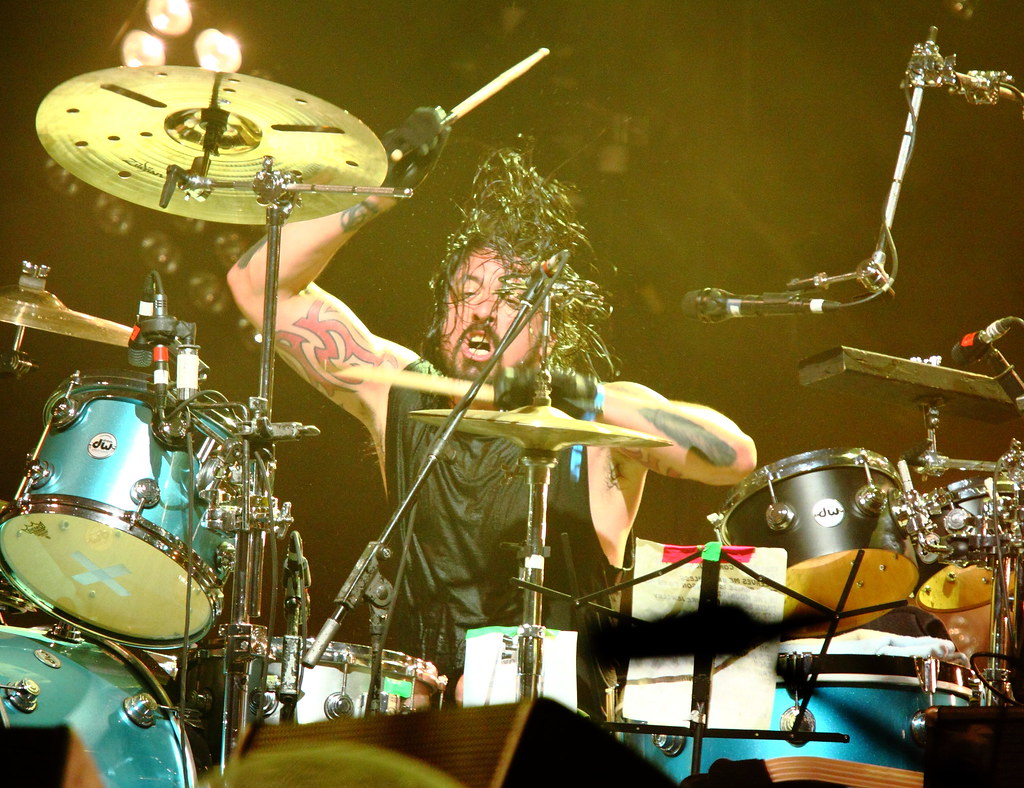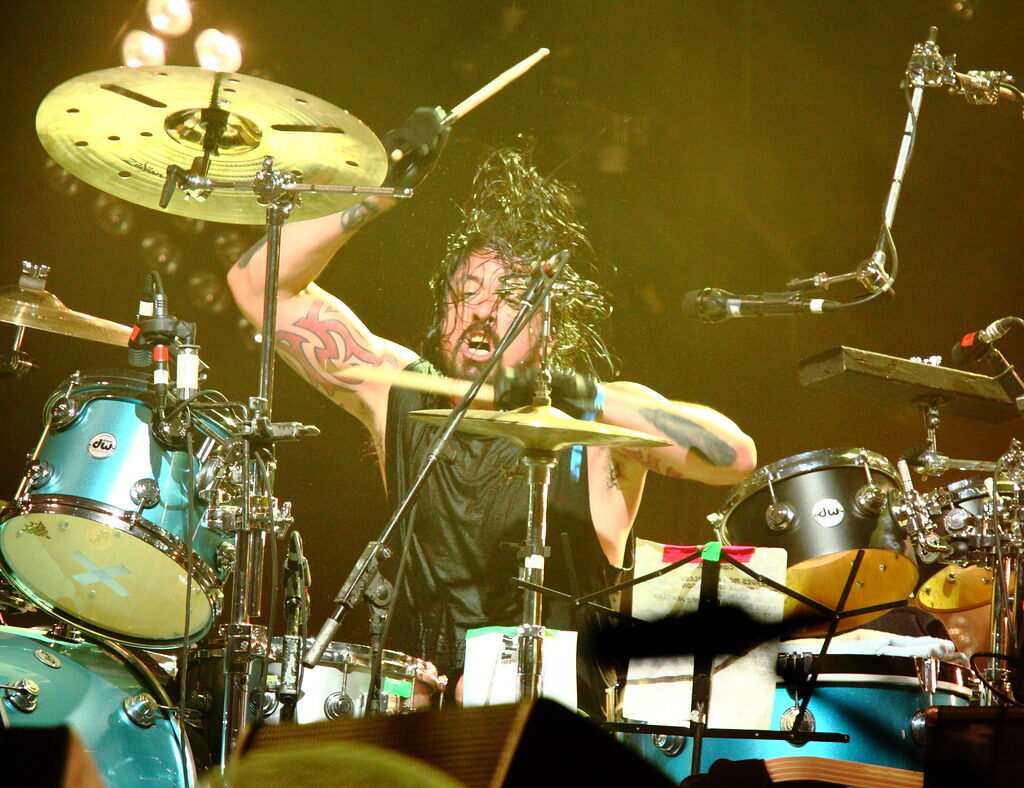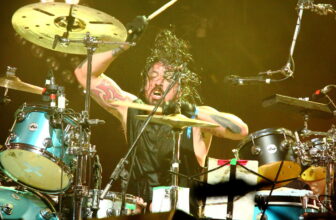Exploring Nirvana’s Drummers: From Bob McFadden to Dave Grohl


No band is more synonymous with ’90s grunge music than Nirvana. With their cutting vocals, pointed lyrics, and driving guitar riffs, the trio of young rockers created an identity that was big, bold, and “in-your-face” enough to capture the eyes and ears of millions worldwide.
But they wouldn’t have made it far without the infectious, hard-hitting drums that became a core part of the Nirvana sound.
Everyone knows about Dave Grohl, the dynamic drummer (and current Foo Fighters frontman) who was part of the band’s meteoric rise to success — but the other six percussionists that preceded him hardly get the same recognition. So, let’s take a deep dive into the seven drummers who shaped Nirvana’s sound!
1) Bob McFadden: A Brief Stint that Shaped History (Pre-Nirvana, 1986)
If you were to look up “Nirvana’s first drummer,” chances are Bob McFadden wouldn’t make the list. That’s because he was only in the band for five weeks during the Summer of 1986. Nonetheless, he played an essential role in the band’s journey, rehearsing with Cobain and Novoselic when they were still finding their footing.
McFadden met Krist in high school while performing in a cover band with Krist’s younger brother, Robert. Krist eventually asked McFadden if he was interested in joining a new band with him and Cobain, to which he agreed. But things didn’t pan out for McFadden — after all, there’s a reason his name has largely been scrubbed from the history of the band that built grunge.
McFadden stated that he “didn’t get what [Cobain and Novoselic] were trying to do.” He came in with a cover band mindset, whereas Cobain and Novoselic were trying to reinvent a genre — or start a new one altogether.
At the end of the Summer, McFadden decided that Nirvana wasn’t for him — he wanted to settle down, focus on school, get his priorities straight — and that wasn’t going to work out for the future superstars.
2) Aaron Burckhard: Setting the Early Beat (Late 1986 – 1987)
After McFadden’s departure, Cobain and Novoselic sought a new drummer to take the throne. They settled on percussionist Aaron Burckhard, who served as a better fit than McFadden. His straightforward, spirited playing set the pace for Nirvana’s early sound.
Burckhard’s drumming can be heard on tracks such as “Help Me, I’m Hungry” and the metal-adjacent “Anorexorcist.” Listen to the beginning of “White Lace and Strange,” and you’ll hear his fiery 16th-note snare intro that perfectly accentuates Novoselic’s bass line.
Could these songs have planted the seeds for the drumming on later hits like “Breed” and “Stay Away?” The similarities are certainly there.
In addition to recording multiple demos with Nirvana, Burckhard performed at their first live show. During the band’s debut show at a house party in Richmond, WA, Burckhard sat in the back, pummeling the kit.
Personality-wise, though, Burckhard didn’t gel with Cobain and Novoselic. He was described as “volatile,” and Kurt didn’t think he took things seriously enough. When Cobain and Novoselic left Aberdeen later in 1987, they parted ways with Burckhard.
3) Dale Crover: Amplifying the Anger (1988)
If anyone could take the reins and steer Nirvana in the right direction after Burckhard, it was Dale Crover. As the drummer of the already-established sludge metal band Melvins, Crover had proven himself to be a seasoned and respected musician.

During his tenure, Crover performed on their first studio demo, which included songs like “Paper Cuts” and “Floyd the Barber.” His playing had a certain heft and contempt that was pivotal in translating the unbridled rage that ran deep through Nirvana’s earliest work. Even when his drumming took a backseat in terms of complexity, his aggressive style barged on through like a bull in a China shop — and that’s a good thing.
Ultimately, Crover moved to San Francisco the same year he joined Nirvana, forcing Cobain and Novoselic to go back to the drawing board.
4) Dave Foster: A Short-lived Stretch and an Unexpected Departure (1988)
By now, we’re seeing that Nirvana had taken the Spinal Tap approach to drummers — when one was taken out (not due to spontaneous combustion, of course), another one stepped up to the plate.
Dave Foster was the fourth musician to take on the role of Nirvana’s new drummer. Foster only had a few live performances with Nirvana under his belt before being canned. Despite being an adequate musician, Foster consistently showed up late to rehearsal — he lived several towns away, and by the time he arrived at practice, Cobain was fed up. Kurt had already booted Burckhard for lacking commitment, and Foster was well on his way to losing his spot, too.
The nail in the coffin for Foster was when Cobain and Novoselic found out he’d been arrested for assaulting the son of the mayor of Cosmopolis, WA. He was subsequently sentenced to spend the next two weeks in jail, further inhibiting the band’s ability to rehearse.
Cobain didn’t have the heart to tell Foster he was fired in person — so instead, he wrote him a letter, airing out his grievances. But the letter was never mailed, and so Foster learned he was no longer in Nirvana when he heard they were auditioning new drummers.
5) Chad Channing: Recording the Drums for Bleach (1988 – 1990)
If Dave Grohl was the drummer who rocketed Nirvana into stardom, Chad Channing laid the groundwork for what would come.
He adapted well to the fast-paced sound Cobain and Novoselic were building, and his drumming had a more melodic, thoughtful side to it. His work can be heard on the band’s debut album, Bleach.
Take a listen to tracks like “Love Buzz” and “About a Girl,” and you’ll hear how Channing dances between subtle, steady rhythms and beats filled with power and hostility. Throughout Bleach, Channing has a solid understanding of the songs as a whole, using his chops to accent and intensify the guitar, bass, and vocals, only taking center stage when appropriate.
But, like all good things, Channing’s time with Nirvana would come to an end. Channing wanted to have a bigger role in the songwriting, but Cobain and Novoselic were growing increasingly disappointed in his drumming. The group reached an impasse, and Channing set out on his own creative endeavors. In May of 1990, Channing and Nirvana mutually parted ways.
After leaving Nirvana, Channing started several bands, including The Fire Ants, The Methodists, and the still active group, Before Cars — in which he performs bass and lead vocals.
6) Dan Peters: The Penultimate Drummer (1990)
Dan Peters joined Nirvana in the Summer of 1990. While his time behind the kit was fleeting, he did leave his mark, recording on the song “Sliver.”

Featuring a straightforward rock beat and plenty of 16th-note snare fills, “Sliver” has a simple yet deceptively catchy sound, much of which can be attributed to Peters’ drumming. Curious musicians can find audio and video clips of his one and only performance with Nirvana at the Seattle Motorsports Garage, where his lively, snare roll-heavy drumming can be heard.
Unfortunately, Nirvana fired him after only a few months with Nirvana — things weren’t coming together as expected, and Peters speculated that the band already had their sights set on Dave Grohl.
Despite this, Peters went on to have a highly successful career as the drummer for another Seattle-based grunge-rock group, Mudhoney, that still performs today.
7) Dave Grohl: The Drummer Who Transformed Nirvana’s Sound (1990 – 1994)
Of course, this list wouldn’t be complete without the one-and-only Dave Grohl, Nirvana’s final (and most lauded) drummer.

Upon being introduced to Cobain and Novoselic by Melvins’ frontman Buzz Osbourne, the band knew they had to have him. He was a heavy-hitter, and his drumming was a force to be reckoned with — it was a winning combination in the eyes of Nirvana.
When Grohl joined the band, fans didn’t just hear the chemistry between the trio — they could feel it. His fierce, relentless drumming paired wonderfully with Kurt’s gut-punching vocals and lyrics, adding an entirely new dimension to Nirvana’s sound.
Grohl was able to combine punk’s angry and frantic style with rock ‘n’ roll’s rhythmic steadiness, yielding the perfect blend for Nirvana. This can be heard throughout the majority of Nirvana’s recorded work, including on the albums “In Utero,” “Unplugged,” and most of “Nevermind.”
From high-octane tracks like “Territorial Pissings” to the more somber, subdued “Something in the Way,” Grohl expertly showcased his aptitude and versatility. At one moment, he was like lightning in a bottle, ready to burst out with explosive force. The next, he was laying back, adding subtle yet steady rhythmic textures that carried the song forward.
As most know, Grohl went on to found Foo Fighters after Cobain’s death in 1994. Before that, though, he briefly performed with Pearl Jam and Tom Petty. Other projects Grohl has been pivotal in include Queens of the Stone Age and Them Crooked Vultures.
Through his musical ventures, Grohl has proven himself not just as an incredible drummer, but a phenomenal singer, songwriter, guitarist, and frontman who’s changed the face of rock music as we know it.
Final Thoughts
Though Dave Grohl is usually the first drummer that comes to mind when we think of Nirvana, it’s important to pay tribute to all the players who preceded him.
From the short-lived Bob McFadden to the highly influential Chad Channing and everyone in between, each percussionist left a piece of themselves with the band, molding Nirvana into the grunge-rock heavyweights that dominated the ’90s.
It’s interesting to consider what could have been — what if Crover never moved to San Francisco? What if Foster hadn’t been arrested? Would Nirvana have made it big if they stuck with Burckhard?
We can’t know for sure, but one thing we do know is that Nirvana clearly struck gold when they welcomed Grohl to their lineup. His passionate performance, technical prowess, and intelligent songwriting made the drums a critical part of the band’s sound, allowing them to take the music world by storm.
Interested in learning more about Grohl’s drumming career? Check out our article “From Nirvana to Now: A Journey Through Dave Grohl’s Drumming Evolution” for a deeper look into the rock ‘n’ roll legend’s rise to fame.





